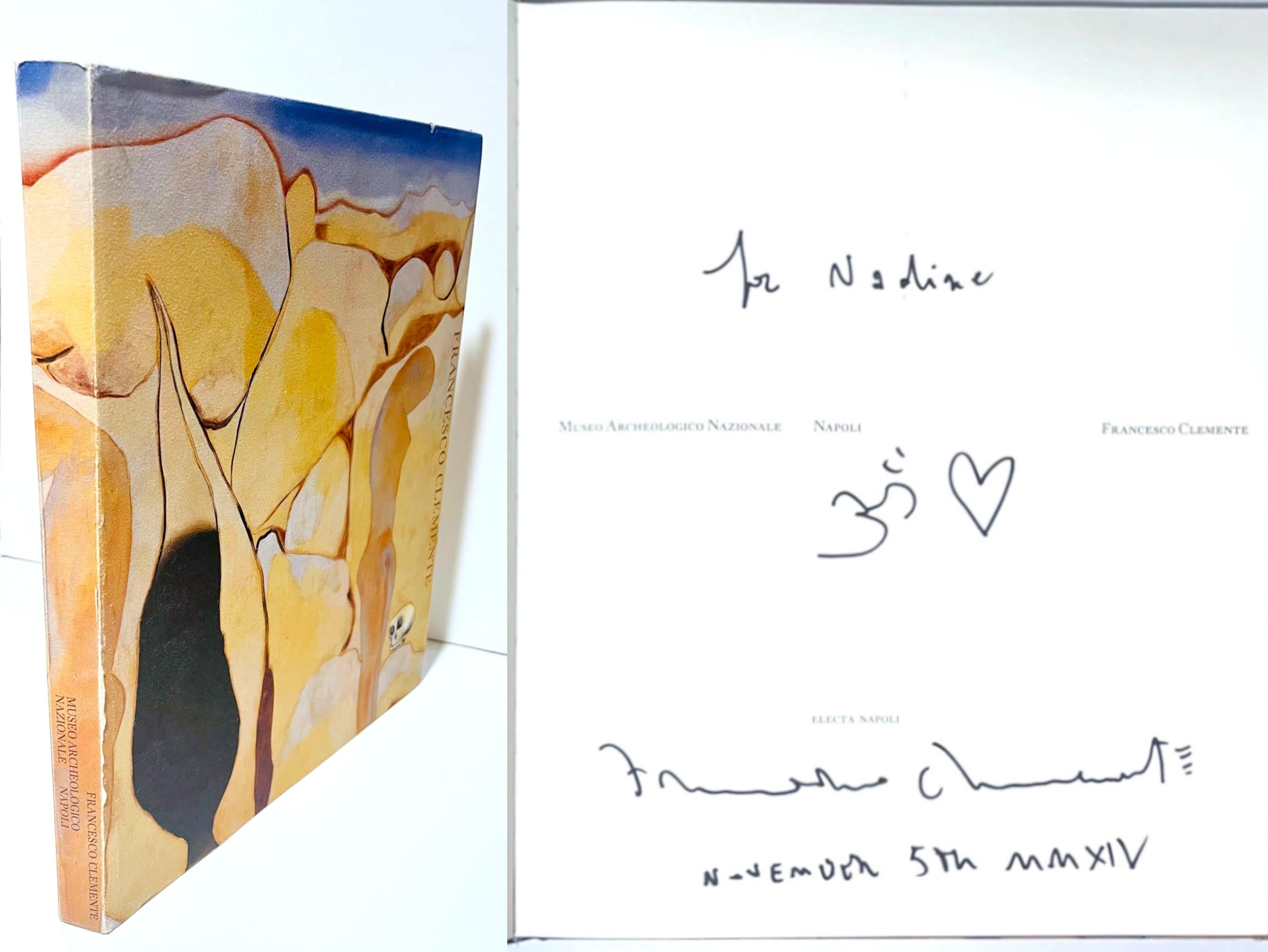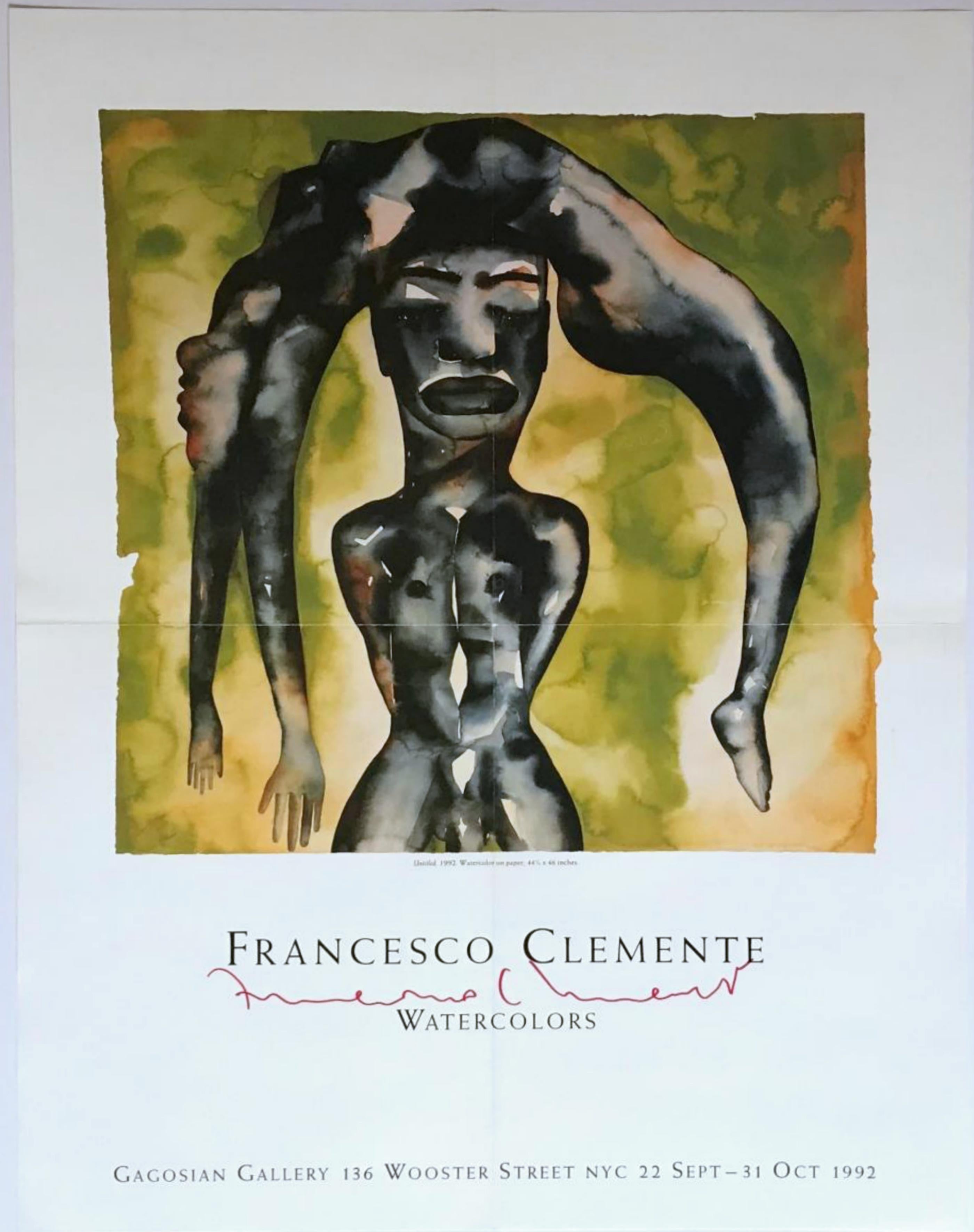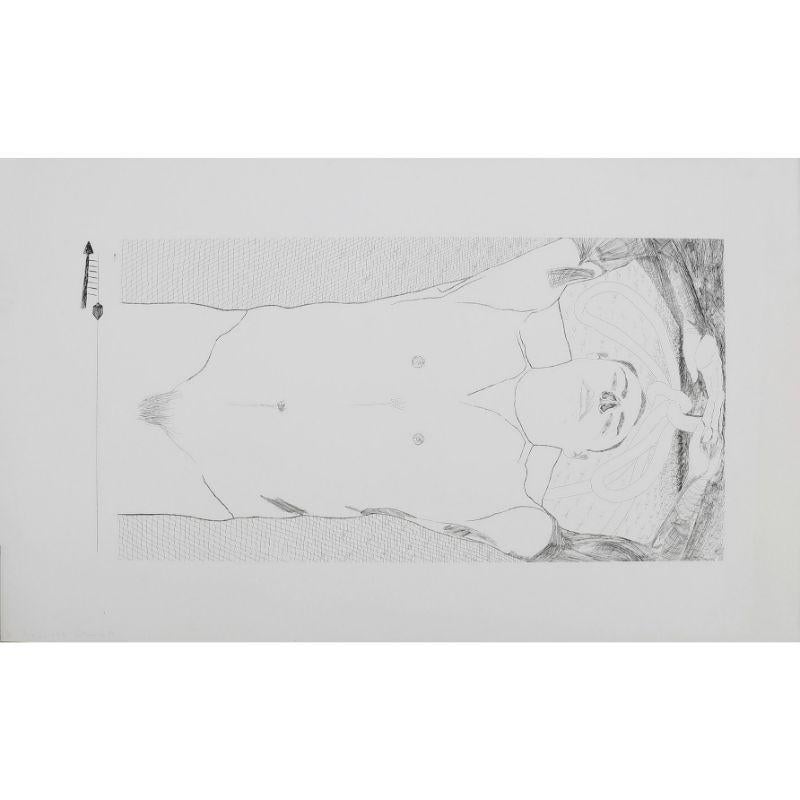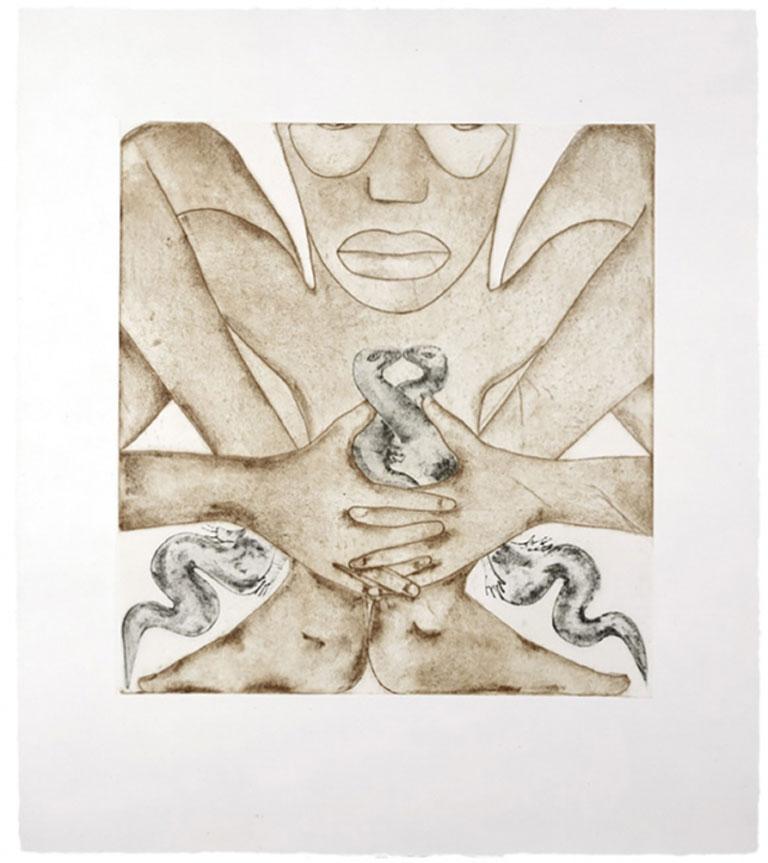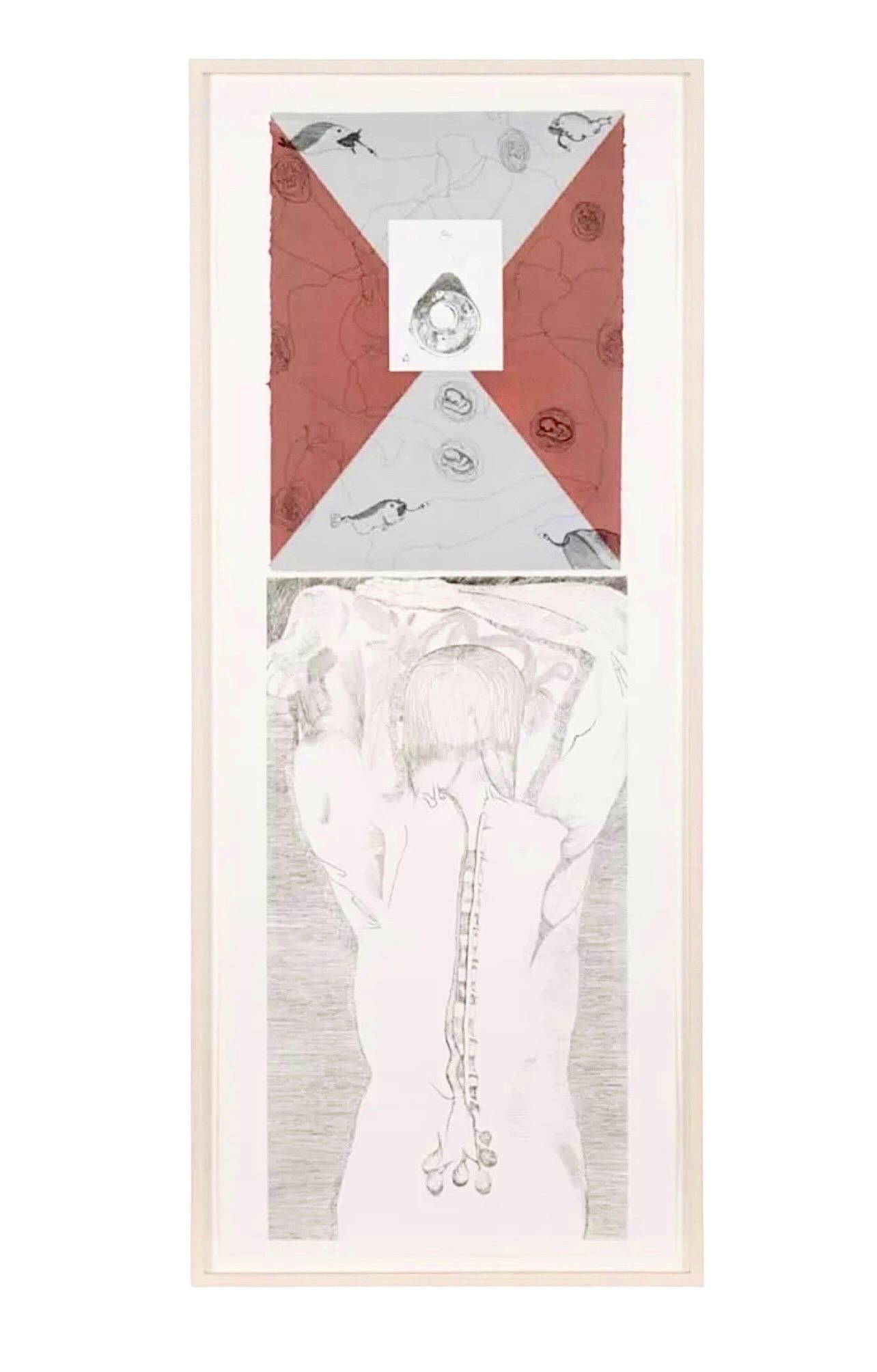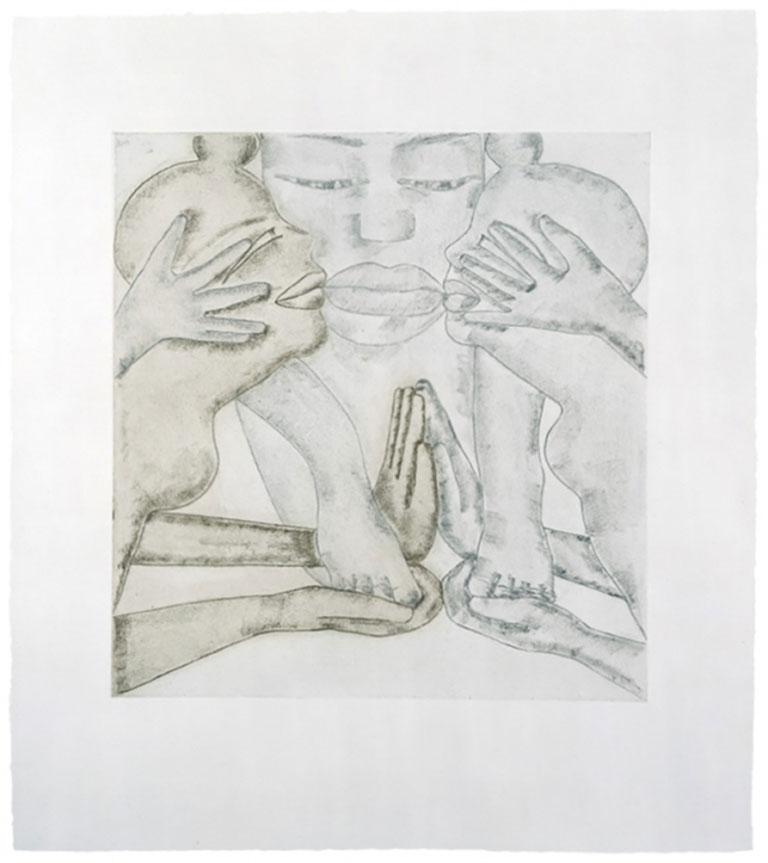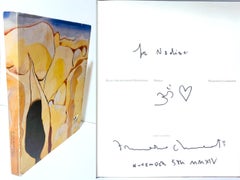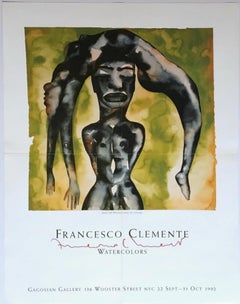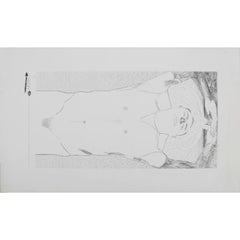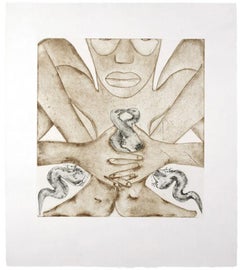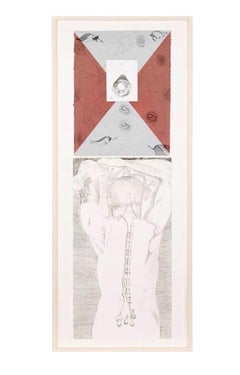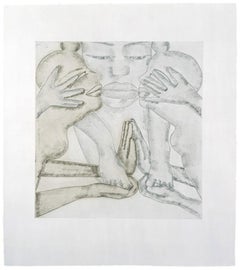Items Similar to Monograph, Hand Signed by Francesco Clemente and inscribed with a small drawing
Want more images or videos?
Request additional images or videos from the seller
1 of 11
Francesco ClementeMonograph, Hand Signed by Francesco Clemente and inscribed with a small drawing1998
1998
$880
£682.49
€775.98
CA$1,255.59
A$1,370.36
CHF 719.75
MX$16,643.66
NOK 9,031.47
SEK 8,475.79
DKK 5,794.64
About the Item
Francesco Clemente
Clemente (Hand Signed by Francesco Clemente and inscribed with a small drawing), 1998
Large Illustrated Softback Exhibition Catalogue. (Hand signed and inscribed to Richard Gombar by Francesco Clemente with a drawing flourish)
Hand signed and inscribed by the artist on the title page.
11 7/10 × 10 × 2 inches
This beautiful, large and comprehensive softcover monograph with stiff wraps is hand signed and inscribed by the artist, Francesco Clemente to American artist Richard Gombar, and was published on the occasion of the exhibition, "Clemente", at the Solomon R. Guggenheim Museum, in New York in 2000. The text of this book is by Lisa Dennison, Craig Houser, Robert Creeley, Gregory Corso, Allen Ginsberg, Jyotindra Jain, Gus Van Sant, Francesco Pellizzi, Raymond Foye, Rene Richard, and Melanie Marino. This catalogue offers a full career retrospective, illustrated with works spanning all mediums the artist has explored throughout his career. This book contains 502 pages with numerous full color illustrations. Especially uncommon when hand signed and inscribed - as is the present work. With a drawing flourish. Makes a terrific gift.
About Francesco Clemente:
Francesco Clemente was born in Naples, Italy, in 1952. After an early academic background in classical languages and literature, he briefly enrolled as an architecture student at the University of Rome, in 1970. Throughout the 1970s he exhibited drawings, altered photographs and conceptual works across Europe. Since 1973 he has frequently resided and worked in India. In 1981 Clemente moved to New York City, where he currently lives with his wife and children. The artist has often engaged in collaborations, both in India with local craftsmen, and in New York with artists Jean-Michel Basquiat and Andy Warhol, among others. He has published many works in conjunction with poets, including John Wieners, Allen Ginsberg, Robert Creeley, and Rene Ricard. Clemente's work has been the subject of numerous exhibitions, including traveling retrospectives of his pastels (Nationalgalerie, Berlin: 1984–85) and drawings (Museum für Gegenwartskunst, Basel: 1987–89). His works on paper were the focus of a full retrospective organized by the Philadelphia Museum of Art in 1990, which traveled within the United States and to the Royal Academy of Arts, London (1991). His works on paper have been shown in exhibitions organized by the Musée National d'Art Moderne, Centre Georges Pompidou, Paris (1994–95) and at the Galleria d'Arte Moderna, Bologna (1999). The artist's comprehensive oeuvre was the subject of a retrospective exhibition, Clemente, mounted by the Guggenheim Museum, New York (1999–2000), which traveled to the Guggenheim Museum Bilbao, Spain (2000). Most recently, a survey of the artist's work was organized by the Museo Archeologico Nazionale di Napoli (2002–03).
- Courtesy of Gagosian Gallery
- Creator:Francesco Clemente (1952, Italian)
- Creation Year:1998
- Dimensions:Height: 11.7 in (29.72 cm)Width: 10 in (25.4 cm)Depth: 2 in (5.08 cm)
- Medium:
- Movement & Style:
- Period:
- Condition:
- Gallery Location:New York, NY
- Reference Number:1stDibs: LU1745213368472
About the Seller
5.0
Gold Seller
Premium sellers maintaining a 4.3+ rating and 24-hour response times
Established in 2007
1stDibs seller since 2022
458 sales on 1stDibs
Typical response time: 2 hours
- ShippingRetrieving quote...Shipping from: New York, NY
- Return Policy
Authenticity Guarantee
In the unlikely event there’s an issue with an item’s authenticity, contact us within 1 year for a full refund. DetailsMoney-Back Guarantee
If your item is not as described, is damaged in transit, or does not arrive, contact us within 7 days for a full refund. Details24-Hour Cancellation
You have a 24-hour grace period in which to reconsider your purchase, with no questions asked.Vetted Professional Sellers
Our world-class sellers must adhere to strict standards for service and quality, maintaining the integrity of our listings.Price-Match Guarantee
If you find that a seller listed the same item for a lower price elsewhere, we’ll match it.Trusted Global Delivery
Our best-in-class carrier network provides specialized shipping options worldwide, including custom delivery.More From This Seller
View AllMonograph: Francesco Clemente (Hand signed, inscribed and dated 2014 (MMXIV) )
By Francesco Clemente
Located in New York, NY
Francesco Clemente (Hand signed, inscribed and dated 2014 (MMXIV) to Nadine with drawings in black marker), 2002
Hardback monograph with dust jacket (Hand signed, inscribed and dated...
Category
Early 2000s Neo-Expressionist Abstract Prints
Materials
Paper, Ink, Mixed Media, Lithograph, Offset
Francesco Clemente (Hand Signed)
By Francesco Clemente
Located in New York, NY
Francesco Clemente
Francesco Clemente Watercolors (Hand Signed), 1992
Offset Lithograph exhibition announcement (Hand Signed)
23 × 18 inches
Hand signed in...
Category
1990s Pop Art Abstract Prints
Materials
Offset
Painting-Malerei, monograph hand signed and warmly inscribed to renowned actress
By Françoise Gilot
Located in New York, NY
Françoise Gilot
Painting-Malerei, hand signed and warmly inscribed to renowned actress, 2003
Hardback monograph, signed in ink with lengthy inscription to American actress Elizabeth ...
Category
Early 2000s Abstract More Art
Materials
Ink, Mixed Media, Lithograph, Offset
Mixed media painting in monograph, Signed & inscribed to Museum Trustees, Framed
By David Hockney
Located in New York, NY
David Hockney
Hockney Paints the Stage (Signed and inscribed to Walker Museum trustees), 1983
Original acrylic, watercolor and ink painting done on title page of monograph (Signed an...
Category
1980s Pop Art Figurative Drawings and Watercolors
Materials
Paper, Ink, Acrylic, Watercolor
Monograph: Robert Indiana Early Sculpture 1960-1962 (Hand signed and inscribed)
By Robert Indiana
Located in New York, NY
Robert Indiana
Deluxe Limited Edition with Slipcase: Robert Indiana Early Sculpture 1960-1962 (Hand signed and inscribed with heart drawing by Robert Indiana ), 1991
Hardback monogra...
Category
1990s Pop Art Abstract Prints
Materials
Paper, Ink, Mixed Media, Lithograph, Offset, Board
Will Barnet: A Timeless World (hand signed, dated and warmly inscribed)
By Will Barnet
Located in New York, NY
Will Barnet: A Timeless World (hand signed, dated and warmly inscribed), 2000
Softback monograph with stiff wraps (hand signed, dated and warmly inscribed)
Hand signed, dated and warmly inscribed to Margo by Will Barnet on the half title page
12 × 9 × 1/2 inches
We believe the colleague Margo refers to renowned African American artist Margo Humphrey, who also worked at the Rutgers Center for Innovative Printmaking with Will Barnet.
The full inscription reads:
Sep 21 2000
To my colleague -Margo-
with appreciation and
affection
Will Barnet
Book information:
Published by the Montclair Art Museum, New Jersey and Distributed by Rutgers University Press
English; Paperback; 124 pages containing 43 color and 20 black-and-white illustrations
Publisher's blurb:
Painter and printmaker Will Barnet has actively participated in the New York art world for nearly 70 years. A leading figure in the Indian Space painting movement of the late 1940s, Barnet stressed the spatial structures of Northwest Coast Indian art. Throughout the 1950s and into the 1960s, he made a series of hardedged, totemic abstractions marked by their "all-positive" space, which he described as austere, classical expressions of Indian culture. He then moved on to new art forms in the 1960s and 1970s, creating a series of family and art world portraits that achieved a remarkable balance between the formal demands of abstraction and the humanist aspects of representation.
Will Barnet: A Timeless World is the first substantial publications to unify Barnet's prodigious output. Art historian Gail Stavitsky provides an overview of this artist's entire career. Twig Johnson, the museum's curator of Native American Art, discusses the relationship of Barnet's work to this important indigenous artistic tradition. Jessica Nicoll, chief curator at the Portland Museum of Art, explores the profound impact of New England upon Barnet and his work. Many of Barnet's works are beautifully reproduced in this catalog, containing 43 color and 20 black-and-white illustrations.
More about Will Barnet:
Will Barnet was born in Beverly, Massachusetts in 1911. He has taught and exhibited widely over his more than seventy-five year career. His works are in the collection of virtually every American museum, including locally The Guggenheim Museum, The Metropolitan Museum of Art, The Museum of Modern Art, and The Whitney Museum of American. He is an elected member of the American Academy of Arts and Letters. In fall 2011 the National Academy Museum will present a retrospective exhibition being organized by Bruce Weber. Barnet is represented exclusively by Alexandre Gallery...
Category
Early 2000s Contemporary Figurative Prints
Materials
Paper, Ink, Mixed Media, Lithograph, Offset
You May Also Like
Francesco Clemente - Hand-Signed Drypoint on Paper, 2/23
By Francesco Clemente
Located in Varese, IT
Francesco Clemente ( 1952 ) - hand-signed drypoint on paper - 74 x 124 cm, 2/23
Additional information:
Material: Drypoint on paper
Very limited edition, numbered in lower left corn...
Category
20th Century Nude Prints
Materials
Paper, Drypoint
Francesco Clemente, Geography South
By Francesco Clemente
Located in New York, NY
GEOGRAPHY, SOUTH
Year: 1992
Medium: 2-color, soft ground etching
Paper Size: 28 x 25 inches (71 x 64 cm)
Plate Size: 19 x 18 inches (48 x 46 cm)
Edition: 60
Price: $6,000
Suite of ...
Category
1990s Contemporary Figurative Prints
Materials
Etching
Large Italian Aquatint Etching Francesco Clemente Neo Expressionist Avant Garde
By Francesco Clemente
Located in Surfside, FL
Francesco Clemente (Italian b. 1952),
'This side up / Telemone #2,
1981
Medium: Intaglio hard ground etching, color aquatint, drypoint, and soft-ground etching with chine collé (ha...
Category
1980s Abstract Expressionist Abstract Prints
Materials
Drypoint, Etching, Aquatint, Intaglio
Francesco Clemente, Geography, North
By Francesco Clemente
Located in New York, NY
NORTH
Year: 1992
Medium: 2-color, soft ground etching
Paper Size: 28 x 25 inches (71 x 64 cm)
Plate Size: 19 x 18 inches (48 x 46 cm)
Edition: 60
Price: $6,000
Suite of four also a...
Category
1990s Contemporary Figurative Prints
Materials
Etching
Francesco Clemente, Geography West
By Francesco Clemente
Located in New York, NY
GEOGRAPHY, WEST
Year: 1992
Medium: 2-color, soft ground etching
Paper Size: 28 x 25 inches (71 x 64 cm)
Plate Size: 19 x 18 inches (48 x 46 cm)
Edition: 60
Price: $6,000
Suite of f...
Category
1990s Contemporary Figurative Prints
Materials
Etching
Francesco Clemente, Geography East
By Francesco Clemente
Located in New York, NY
GEOGRAPHY, EAST
Year: 1992
Medium: 2-color, soft ground etching
Paper Size: 28 x 25 inches (71 x 64 cm)
Plate Size: 19 x 18 inches (48 x 46 cm)
Edition: 60
Price: $6,000
Suite of f...
Category
1990s Contemporary Figurative Prints
Materials
Etching
More Ways To Browse
Francesco Clemente Lithograph
Rene Robert
Miro Le Lezard
Motherwell Elegy
Richard Hunt Lithograph
Richard Hunt Prints
Signed Calder Print
Silvio Zamorani
Sue Fuller
Willem Sandberg
Yaacov Agam Serigraph
Agam Lenticular
Alexander Calder Print Signed
Andre Masson Original Lithograph
Brillant Gilou
Cedric Johner
Daniel Roth
Giulio Marelli
